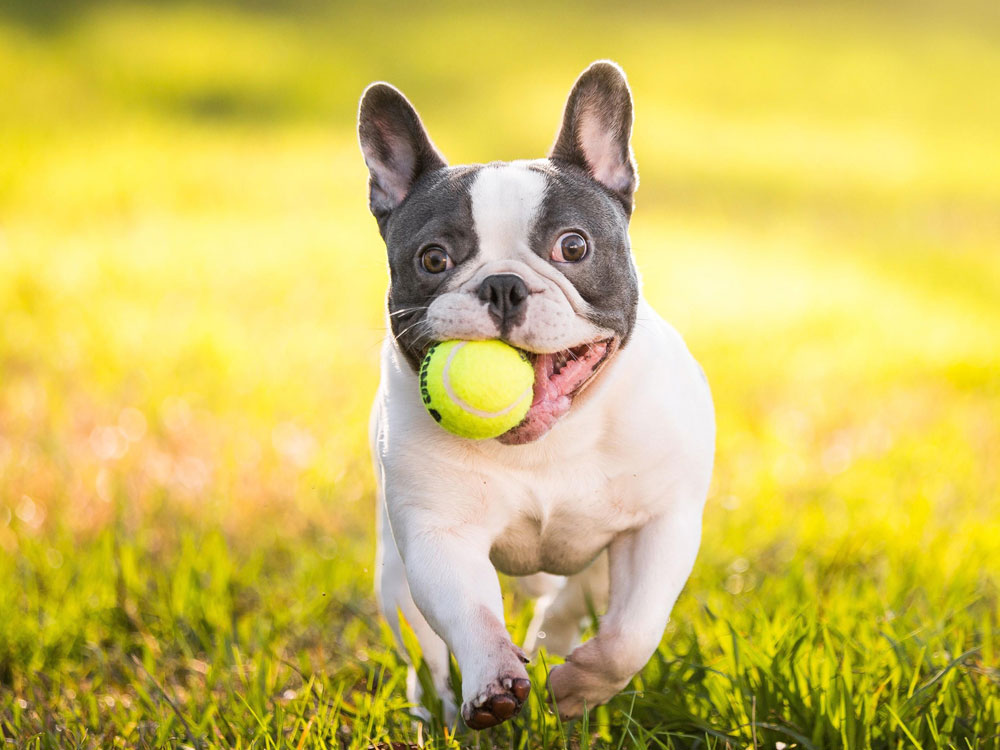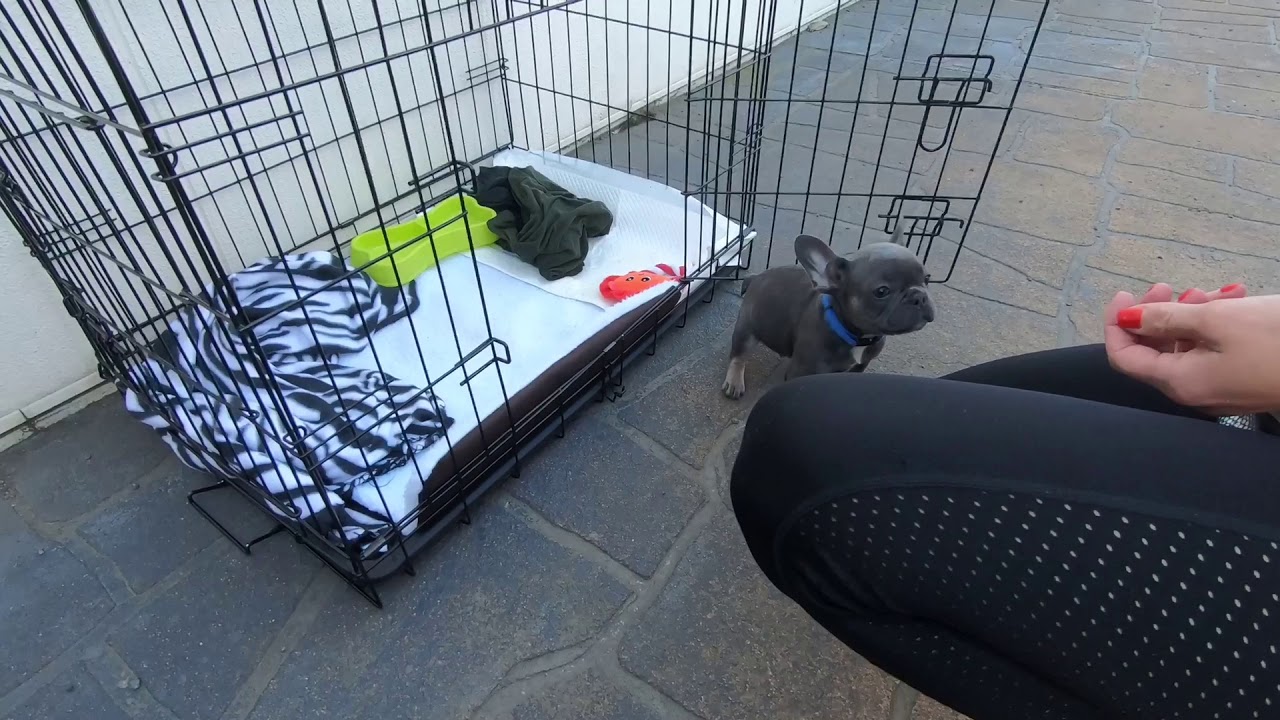Introduction
French Bulldogs, also known as Frenchies, have gained popularity because of their adorable looks and charming personalities. Despite being small, they are lively and show great affection towards their owners. To ensure your Frenchie is well-behaved and happy, it’s important to provide consistent training. This comprehensive guide on How to Train a Frenchie? will help you train your French Bulldog effectively by covering all the essential steps.

How to Train a Frenchie?
Understanding French Bulldogs
Characteristics and Qualities
French Bulldogs are known for their affectionate demeanor and lively personality. They thrive on human interaction and are excellent companions for both families and individuals. However, their strong-willed nature can pose a challenge during training sessions. Recognizing their blend of intelligence and obstinacy is key to successful training.

Common Behavioral Issues
Frenchies may exhibit behaviors like excessive barking, chewing, and separation anxiety. These problems can disrupt your daily routine and impede your training efforts. Being aware of these tendencies beforehand will allow you to address them proactively.

Understanding Your French Bulldog’s Individual Needs
Every dog, including French Bulldogs, is unique. Understanding your Frenchie’s specific requirements, such as dietary preferences and exercise needs, will help you tailor your training methods effectively.
Basic Training Principles
The significance of being consistent and patient when training a French Bulldog cannot be overstated. These dogs may require repeated commands and a consistent routine due to their slower learning pace.
Implementing positive reinforcement methods such as treats, praise, and toys can significantly improve the effectiveness of training. By rewarding good behavior, you are encouraging your Frenchie to continue displaying those behaviors, ultimately making the training process enjoyable for both of you.
Establishing realistic training objectives and milestones is crucial in monitoring your Frenchie’s progress. Acknowledging and celebrating small accomplishments will help keep both you and your dog motivated throughout the training journey.

What age can I start to train my French Bulldog puppy?
As soon as you bring your French Bulldog puppy home, you can start training them immediately. Although it might be tempting to simply snuggle and smooch them, these smart dogs love making their owners happy, so it’s advisable to begin teaching them from the beginning.
Like most other dogs, French Bulldogs do well with clear rules and regular training. It is crucial to employ positive reinforcement methods during your puppy’s training.

Essential Training Techniques
Training for Obedience
Teaching Basic Commands
- Sit: Use a treat to guide your French Bulldog into a sitting position, then say “sit” and reward them.
- Stay: After telling your dog to sit, signal them to stay with a hand gesture like a stop sign. Take a step back, and if they stay in place, give them a reward.
- Come: Call your Frenchie to come to you in a cheerful tone and gently tug on the leash. Reward them when they come to you.
- Down: Hold a treat and lower it to the ground to guide your Frenchie into a lying down position while saying “down.”

Teaching Basic Commands
Behavior Management
Addressing Common Behavioral Issues
- Barking: Identify what triggers barking and redirect their attention with commands or toys.
- Chewing: Provide appropriate chew toys and prevent access to items they shouldn’t chew on.
- Jumping: Ignore jumping behavior and only reward your Frenchie when all four paws are on the ground.

Addressing Common Behavioral Issues
Potty Training Your French
Start french bulldog potty training :
Select a specific area in your yard for your dog to relieve itself. It’s crucial to avoid allowing your dog to get accustomed to going indoors if you prefer it to go outside. Lead your dog to the designated spot as soon as you take it outside, and wait for it to urinate or defecate before returning inside.
When your dog goes to the bathroom outside, make sure to praise and give it attention. This will help your dog associate outdoor bathroom breaks with positive reinforcement.
Begin housebreaking your French bulldog promptly to establish good habits early on. Refrain from using puppy pads, as this can confuse your dog about where to go and prolong the housebreaking process.
Be attentive to signs indicating that your dog needs to go to the bathroom, such as panting, pacing, barking, or wandering off to a quiet area. Make it a habit to provide your dog with frequent opportunities to relieve itself.
If your dog has an accident indoors, clean it up immediately using a pet-specific cleaner to eliminate any traces of urine scent. Avoid scolding or physically punishing your dog, as this will not aid in housebreaking and could harm the bond between you and your pet.
Socialization Strategies
Importance of Early Socialization
The early socialization process is extremely important in molding French Bulldogs into balanced and well-adjusted adults. It helps reduce the likelihood of aggression caused by fear and other behavioral issues.
Tips for Introducing Your French Bulldog
Slowly expose your French Bulldog to various environments, people, and animals. Promote and reinforce calm behavior while ensuring that new interactions are positive and pleasant experiences.
Exercise and Play
Incorporating interactive toys and mental stimulation activities into your French Bulldog’s daily schedule will offer a combination of physical exercise and cognitive engagement.
Crate Training
Choose the right crate. Select a crate that is spacious enough for your French bulldog to stand up comfortably without having to bend its back. Ensure there is ample space for your puppy to grow into its adult size and move around easily inside the crate.
Utilizing a crate is an effective tool for house training your French bulldog and providing a safe space for them when necessary.
Set up the crate. Arrange the crate, add a soft blanket or pad, and place some treats inside to encourage your dog to use it. Avoid leaving food or water in the crate, as it should be a cozy and secure environment for your pet.
Place the crate in a quiet area where your dog can still feel connected to the family, preventing them from associating the crate with isolation or punishment.
Introduce your dog to the crate. Keep the crate door open and allow your dog to explore it freely. Gradually close the door for short periods while remaining nearby to reassure your pet. Only open the door when your dog is calm and quiet.
Avoid letting your dog out of the crate if they are whining or scratching at the door.
Gradually increase crate time. Slowly increase the amount of time your dog spends in the crate, starting with short intervals and gradually extending them. Older dogs can stay in the crate for up to 4 hours at a time, but never use the crate as a form of punishment.
By following these steps, you can help your French bulldog become comfortable and familiar with their crate.

Advanced Training and Fun Tricks
Teaching Advanced Commands and Skills
Involve your French Bulldog in mastering complex commands like rolling over, shaking paws, and spinning around to ensure that training remains fun. Utilize the same positive reinforcement techniques as you would for simpler commands.
Appreciating Accomplishments
Acknowledge and incentivize your French Bulldog’s achievements with praise and treats to sustain their motivation and eagerness to keep learning.
Recommended Training Tools and Resources
Essential Training Gear
- Leashes and Harnesses: Choose durable and comfortable options.
- Training Pads: Useful for housebreaking and managing accidents.
- Interactive Toys: Keep your French Bulldog mentally stimulated.
Educational Materials
Resources such as books by Cesar Millan, tutorial videos on YouTube, and online courses on platforms like Udemy can provide additional support for training.
Hiring Professional Trainers
Look for certified professional dog trainers (CPDTs) who utilize positive reinforcement techniques. Attend local training classes for hands-on guidance.
Tips for Successful Training
General Tips
- Consistency: It is crucial to stick to a regular training schedule.
- Patience: Understand that training takes time and commitment.
- Positive Environment: Foster a supportive and encouraging atmosphere during training sessions.
Common Mistakes to Avoid
To ensure effective training, avoid giving conflicting commands, resorting to harsh punishments, and setting unrealistic goals.
Encouragement for Ongoing Training
Training should be seen as an ongoing journey. Regular training sessions will help keep your French Bulldog’s skills sharp and deepen your bond with them.
Frequently asked questions (FAQ)
1. How can I stop my French bulldog from barking?
– Identify and address the triggers for the barking.
– Use positive reinforcement to reward quiet behavior.
– Teach the “quiet” command.
– Provide mental and physical stimulation to reduce boredom.
2. How can I train my French bulldog to walk on a leash?
– Start leash training indoors in a calm environment.
– Use high-value treats to reward good leash behavior.
– Be patient and gradually increase time/distance on the leash.
– Use a front-clipping harness if needed.
3. How can I train my French bulldog to do tricks?
– Begin with simple commands like “sit”, “stay”, “come”.
– Use positive reinforcement and break tricks into small steps.
– Practice regularly in short, fun training sessions.
– Consider advanced tricks like “shake”, “roll over”, “spin”.
4. What are some common problems French bulldogs have and how can I train them out of it?
– Stubbornness – Use patience, consistency, and positive reinforcement.
– Overheating – Limit exercise in hot weather, provide cooling aids.
– Breathing issues – Avoid strenuous activity, use a harness not collar.
– Skin/coat problems – Brush regularly, use gentle shampoos.
5. Why do French Bulldogs fart so much?
French Bulldogs fart a lot due to their brachycephalic anatomy, sensitive digestion, tendency to swallow air, diet, and genetics.
Conclusion
Training your French Bulldog can be extremely rewarding and fosters a strong bond with your furry companion. By understanding their individual needs, utilizing positive reinforcement, and maintaining consistency, you can have a well-behaved and happy Frenchie. For more tips and assistance on training a French Bulldog, check out our resources. Have fun with the training!!

